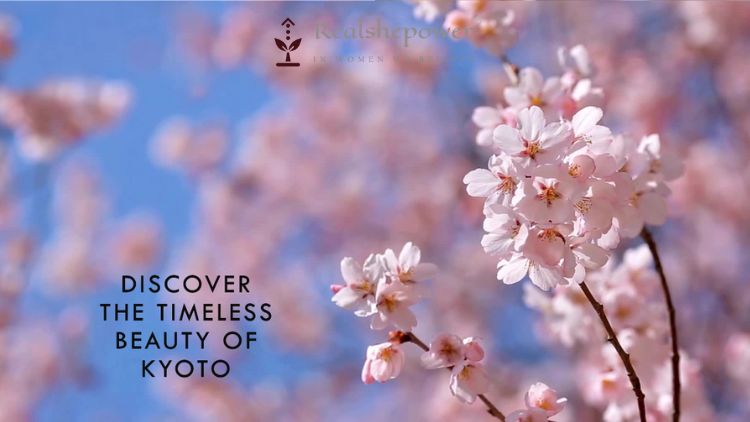Kyoto: A Timeless Journey Through Japan’s Heart


Nestled among the rolling hills of the Kansai region, Kyoto, the former imperial capital of Japan, offers a mesmerizing blend of ancient traditions and modern sophistication. Known for its well-preserved temples, traditional tea houses, and vibrant festivals, Kyoto invites travelers to step into a living museum where every alleyway and garden tells a story.
Table of Contents
The Enchanting Temples and Shrines of Kyoto
Kyoto is home to over 2,000 temples and shrines, each with its own unique charm and history. The iconic Kinkaku-ji, or the Golden Pavilion, is a sight to behold, with its top two floors completely covered in gold leaf, reflecting brilliantly in the pond below. Not far from the city center lies Fushimi Inari Taisha, famous for its thousands of vermilion torii gates that create an otherworldly path up the sacred Mount Inari.
- Read More: 5 Kyoto’s Insta-Famous Temples & Shrines
A Stroll Through History: Gion and Higashiyama
Gion, Kyoto’s most famous geisha district, offers a glimpse into the city’s traditional entertainment culture. Walking through its cobbled streets at dusk, one might catch a glimpse of a geiko (Kyoto dialect for geisha) or maiko (apprentice geisha) hurriedly making their way to an evening engagement. Adjacent to Gion, the Higashiyama district is filled with narrow lanes, wooden buildings, and traditional merchant shops, offering a taste of old Kyoto.
Culinary Delights: Kaiseki Cuisine and Matcha Treats
Kyoto’s culinary scene is as rich and refined as its cultural heritage. The city is the birthplace of kaiseki cuisine, a traditional multi-course meal that emphasizes seasonality, artful presentation, and delicate flavors. For those with a sweet tooth, a visit to a traditional tea house for some matcha (powdered green tea) and wagashi (Japanese sweets) is a must. The Nishiki Market, known as Kyoto’s kitchen, offers an array of local specialties from pickles to fresh seafood.
Seasonal Splendors: Cherry Blossoms and Autumn Leaves
Kyoto is perhaps at its most breathtaking during the cherry blossom season in spring and the colorful foliage season in autumn. The Philosopher’s Path, a stone path lined with hundreds of cherry trees, becomes a tunnel of pink blossoms in spring. Come autumn, the gardens of Tofuku-ji Temple turn into a canvas of red, orange, and yellow, drawing visitors from all over the world.
Finding Zen: Gardens and Tea Ceremonies
The art of the Japanese garden is nowhere more evident than in Kyoto. The Ryoan-ji Temple is renowned for its karesansui (rock garden), an austere arrangement of rocks and sand meant to embody the essence of Zen Buddhism. Participating in a tea ceremony offers another path to mindfulness, where every movement and gesture is a practice in focus and elegance.
Beyond the Beaten Path: Arashiyama and Beyond
While the temples and the geisha districts often steal the limelight, Kyoto’s natural landscapes offer serene escapes. Arashiyama, with its towering bamboo groves, provides a surreal experience, especially in the early morning mist. The area is also home to the Iwatayama Monkey Park, where visitors can interact with wild macaques and enjoy panoramic views of the city.
Festivals and Seasons: Kyoto’s Cultural Calendar
Kyoto comes alive with festivals throughout the year, each offering a unique glimpse into the city’s traditions. The Gion Matsuri, held in July, is one of Japan’s most famous festivals, featuring elaborate floats and traditional garb. Another notable event is the Jidai Matsuri in October, where participants dress in costumes spanning various periods of Japanese history.
A Haven for Art Lovers: Museums and Galleries
Art enthusiasts will find Kyoto’s museums and galleries a treasure trove of traditional and contemporary art. The Kyoto National Museum and The Museum of Kyoto are just a couple of venues where one can spend hours admiring the artistry that spans centuries. Additionally, the Kyoto International Manga Museum offers a modern contrast with its vast collection of manga.
Workshops and Classes: Immersing in Kyoto’s Craftsmanship
For those interested in experiencing Kyoto’s artistic traditions firsthand, numerous workshops offer lessons in activities like pottery, calligraphy, and kimono wearing. Participating in these classes provides a deeper understanding of the meticulous craft behind Kyoto’s cultural artifacts.
FAQs:
Q: What is the best time to visit Kyoto?
A: While Kyoto is beautiful year-round, the cherry blossom season in late March to early April and the autumn foliage season in November are particularly spectacular. However, these periods also coincide with peak tourist seasons, so booking accommodations in advance is recommended.
Q: How do I get around Kyoto?
A: Kyoto’s comprehensive public transportation system, including buses, trains, and subways, makes it easy to navigate the city. Renting a bike is another popular option, offering the flexibility to explore at your own pace.
Q: Can I participate in a tea ceremony if I don’t speak Japanese?
A: Yes, many tea houses offer ceremonies in English or provide English materials to guide participants through the process. It’s a fantastic way to experience a quintessential part of Japanese culture.
Q: Are there vegetarian options available in Kyoto?
A: Absolutely. Kyoto cuisine includes many vegetarian dishes, owing to its Buddhist traditions. Restaurants specializing in shojin ryori (Buddhist vegetarian cuisine) offer a delightful experience for vegetarians and vegans alike.
Q: What should I bring back as souvenirs from Kyoto?
A: Kyoto is famous for its crafts, including Kiyomizu pottery, Yuzen dyed textiles, and folding fans. Green tea and Japanese sweets from traditional confectioneries also make excellent gifts.
By exploring Kyoto, travelers embark on a journey that transcends the beauty of its landscapes and dives deep into the heart of its cultural heritage. Whether you’re captivated by the tranquility of its gardens, the opulence of its festivals, or the warmth of its tea, Kyoto promises a travel experience that stays with you long after you’ve returned home.
Cuba in pictures: plan your trip to this pocket friendly destination now

Countdown to 2024: Asia’s Top Destinations for a New Year’s Extravaganza!

Discover Shanghai: A Comprehensive Travel Guide to China’s Gleaming Gem

You can now write for RSP Magazine and be a part of the community. Share your stories and opinions with us here.
